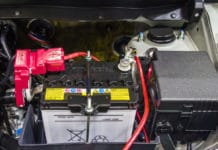
Today, Gel and AGM batteries are common in the market. When it comes to choosing between the two types of cells, decision-making is usually challenging. Many people find it hard to differentiate between the two batteries. Who is to blame for the confusion? I can never blame anyone because both the AGM and Gel batteries share a lot of similarities.
For instance, both models use valve-regulated lead-acid technology. Also, their design makes the two models spill-proof. The fact that the two models are maintenance-free also makes many users get confused when differentiating between the two models.
AGM battery vs. gel battery: are there any differences? Despite sharing many similarities, AGM batteries are different from gel batteries. Some of the most common variations include:
1. Their origin is different
2. Each type of cell has a unique design
3. Gel batteries are expensive
4. Gel batteries have a long life cycle as compared to AGM batteries
5. The two types of cells are charged using different chargers
6. Gel batteries isn’t designed for the cold weather
Listed are six differences between the two types of cells, which are easy to point out. Without saying much, I will proceed and give a detailed explanation, which can help you clear the confusion while choosing in between a gel battery and an AGM battery.
Let’s Find Differences Between These Batteries In-Depth
1. The Two Types of Cell Have different Histories
Almost everything that has ever existed has a storyline. For example, as a human being, you can tell where you were born and some history about your ancestors. Well, batteries are in no way exceptional. So, the two types of lead-acid batteries have different histories, although they seem to share a lot in common.
The name AGM technology came into existence back in the early ‘80s. As per the history, the AGM battery technology was an idea by the military. During that period, the army guys were looking for an alternative way to provide a consistent supply of power for their jets, helicopters, and vehicles.
While looking for a solution, the idea to make an AGM was initiated. Since then, AGM batteries have continued to gain popularity across various platforms. The battery is lightweight and thus suitable as compared to the-then available options. Also, the fact that it’s non-spillable made the invention ideal for the military work environments where there is a lot of maneuvering involved.
On the other end, the name gel battery was common in the early ‘30s. The battery was specifically designed to power the tube radio. The battery was created by adding silica to the sulfuric acid. With time, this kind of cell has also continued to evolve and gaining popularity amongst people.
2. Each Battery Type Has a Unique Design
Although both types of cells are sealed, they have some differences internally. For instance, an absorbent glass mat (AGM) battery is known for having a separator, fiberglass, stuck in between the plates and the wrapper.
As its name suggests, this battery model has fiberglass separator and which holds the electrolyte in place using capillary action. The fiberglass mat soaks up all the acid present in the battery. The mat keeps the electrolyte together to the point that there will be less spillage if the battery cracks.
On the other end, gel batteries are also a type of lead-acid batteries, which use a gel-like electrolyte. This battery’s electrolyte comprises sulfuric acid and fumed silica. The silica (sand) present in this model helps turn the acid into a thick liquid. This impenetrable liquid is what makes gel batteries also safe for use because they are unspillable.
However, when it comes to comparing the designs, the AGM battery is more reliable as compared to the jelly cell. The safety is because an AGM battery has no electrolyte left to leak in case of an accident.
3. Both Batteries Have Different Life Expectancies
When it comes to shopping for the right battery for your car or machinery, you must consider the life expectancy. What is life expectancy you may ask?
Life expectancy is a measure of the number of times you can charge and recharge your battery. Every battery has a unique life expectancy. However, you must know that the battery’s life can be affected by various factors such as how well you take care of your car’s battery.
By digging shallowly over the internet, you will learn that AGM batteries shouldn’t be recharged more than 50%. What does the discharge rate have to do with your battery’s life? By ensuring that the battery doesn’t discharge more than 50%, you provide that the battery gives you a long service life, as per the description.
Learn about the longevity of AGM Battery.
More often than not, your battery may discharge up to even 70%. As long as you don’t make that a habit, it won’t interfere with the battery’s life cycle significantly. Jelly cells, on the other end, are deemed to be a deep cycle type of batteries.
What does it mean when we say that this battery type is a deep cycle? The fact that a cell is a deep cycle means that it can be discharged up to 90% and have a less impact on the life cycle. In other words, with a jelly battery, you can get more cycles regardless of the number of times you discharge it more than 90%.
4. Gel Batteries Are More Expensive as Compared to AGM Batteries
By digging shallowly over the battery sales statistics, you will learn that the sale of AGM batteries is higher as compared to that of gel models. How is that even possible, with all the benefits that come with having the jelly cells?
You must consider the fact that all these benefits come with a higher price tag. It is for this reason that AGM batteries outsell the gel batteries by 100 to 1. Even though the jelly cells tend to be more expensive, they are worth every penny. If used properly, these battery models can give you an excellent service, more than you could expect.
5. They Are Charged Differently
Now and then you will come across chargers labeled AGM and others gel. This is evident that the two types of batteries charge differently. One thing that you should have at the back of your head is that gel batteries are more sensitive when it comes to charging. Therefore, they require a special kind of a charger to get the job done.
If you’re not careful with the type of charger you use, you may end up killing the battery even if it’s new. What will happen if I use a fast charger, for example, on my jelly cell? The sad truth is that such a simple mistake creates a pocket in the jelly. The pockets on the other end allow the plates to start corroding and thus a premature fail on your battery.
On the other end, an AGM battery can be charged with even a regular charger. However, I always advise people to stop using this kind of chargers unless there is no otherwise. Charging an AGM battery using a standard charger needs to be monitored all along.
That is, you will need to adjust the voltages and current based on the battery’s status. Failure to observe the charge can lead to overcharging, which can cause damages to the battery, in the long run.
Therefore, when it comes to charging these types of batteries, you must be cautious and ensure that you use the charger designed specifically for the battery. Modern battery chargers are advanced and allow one to choose various charging mode.
Therefore, you can expect to find a charger with both the AGM and gel mode. All that is needed of you is to choose in between the battery modes based on the battery in question.
You can find the best AGM batteyr charger i wrote an article for you, click here to learn more.
6. Gel Batteries Don’t Go Well With the Cold Weathers
While inventing the AGM batteries, the military was focused on coming up with a gadget that would keep up with the harsh arctic conditions. As a result, AGM batteries aren’t affected by cold conditions. Therefore, you can expect this type of cell to maintain its power during the winter season.
Gel batteries on the other side aren’t designed with the cold weather in mind. According to their design, these types of batteries tend to lose charge faster during the lower temperatures. The jelly cells lose the charge more quickly because of their thixotropic composition. It’s for this reason that you can rarely find a snow-mobile running on a gel battery.
Which is Better Between an AGM Battery and a Gel Battery?
By going through the differences between the two types of batteries, you will learn that the two are unique in their ways. Therefore, choosing between the two models can be a bit hectic. However, you can use some pointers such as your budget to decide on the battery you should use. Also, how you intend to use the battery can help you determine which is which.
Conclusion
Choosing between a jelly cell and an AGM battery is a straightforward task. But, that’s not always the case because the two battery models can be confusing. The two models share a lot of similarities, which shouldn’t hinder you from picking your ideal battery.
Listed in this piece are characteristic differences between the two models. Read through the article to grasp the cells in depth. By doing so, you may save yourself from a big mess between the buying process and the battery use.
Source:
1. What are the differences between AGM and gel batteries? – Intercel
2. The Differences Between AGM, GEL and FLOODED Batteries – Battery Guys
3. AGM Battery Versus Gel Battery: Which Is Better? – UPS Battery Center





